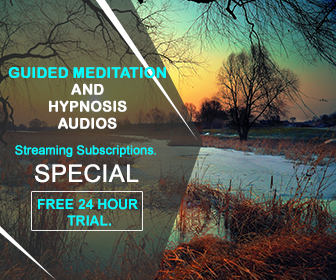Sometime back in the 16th century, we borrowed the word psyche directly from Greek into English. In Greek mythology, Psyche was a beautiful princess who fell in love with Eros (Cupid), god of love, and went through terrible trials before being allowed to marry him.
The story is often understood to be about the soul redeeming itself through love. (To the Greeks, psyche also meant “butterfly”, which suggests how they imagined the soul.) In English, psyche often sounds less spiritual than soul, less intellectual than mind, and more private than personality.
In ancient Greek, her name eventually became associated with the word ‘soul’ or ‘mind’. In psychology, we call the soul or mind the human psyche. It allows us to think, judge, and feel emotions.
The human psyche is the mind or soul. It is the center of an individual’s emotions, thought and behavior. The psyche controls the individual’s response to their environment. The etymology of the word refers to the animating spirit of the individual.
In psychology, the psyche is the totality of the human mind, conscious and unconscious. Many thinkers, including Carl Jung, also include in this definition the overlap and tension between the personal and the collective elements in man.
Psychology is the scientific or objective study of the psyche. The word has a long history of use in psychology and philosophy, dating back to ancient times, and represents one of the fundamental concepts for understanding human nature from a scientific point of view.
THE SOUL OR THE MIND
The idea of the psyche is central to the philosophy of Plato. Scholars translate the Platonic conceptualization of the term as “soul” in the sense that he believed that it is immortal. In his Phaedo, Plato has Socrates give four arguments for the immortality of the soul and life after death following the separation of the soul from the body.
Plato’s Socrates also states that after death the Psyche is better able to achieve wisdom and experience the Platonic forms since it is unhindered by the body.
Aristotle’s theory of the “three souls (psyches)” (vegetal, animal, and rational) would rule the field of psychology until the 19th century. Prior to Aristotle, a number of Greek writings used the term psyche in a less precise sense.
Currently, there are two separate models used to describe the existence of the human psyche. The religious model refers to the psyche as the ‘soul’. It also supports the idea that the soul is independent of the body and exists both before and after our human lives here on earth.
The second model, known as the secular model, refers to the psyche as the ‘mind’. In this model, the psyche acts as an extension of the body and reacts to brain functions and outside stimuli.
CLICK ON ABOVE GRAPHIC FOR MORE INFORMATION
PSYCHOANALYSIS
The human psyche usually refers to the conscious and unconscious parts of the human mind or spirit. Contemporary ideas of the psyche have been influenced by the differing theories of Sigmund Freud and Carl Jung.
In psychoanalysis and other forms of depth psychology, the psyche refers to the forces in an individual that influence thought, behavior and personality.
Sigmund Freud defined the human psyche as consisting of the id, ego and superego. The id is impulsive and demands immediate satisfaction, while the ego helps to mediate its demands with the real world. The super ego incorporates the values and norms of the world around the individual.
Both the ego and the superego can function in all three levels of consciousness, but the id usually remains within the unconscious.
Carl Jung further refined the description of the psyche to include a collective unconsciousness. He saw the psyche as existing since birth.
He spoke of the self as the whole of the psyche, the persona as the part of the psyche that developed for personal convenience, and the shadow as carrying the things an individual was unwilling to admit about himself.
FREUDIAN SCHOOL
The id represents the instinctual drives of an individual and remains largely unconscious. It does not respect the rules of society.
The super-ego, which represents a person’s conscience and their internalization of societal norms and morality.
The ego, which is conscious and serves to integrate the drives of the id with the prohibitions of the super-ego.
The Freudian model divides the psyche into three levels of awareness, that can be represented by a boat floating on the sea.
The conscious mind is the portion above the water. It contains everything that an individual is aware of at the moment, such as thoughts, wishes, feelings, and memories.
The portion of the boat that is just under the water is the preconscious mind. In this analogy, it’s similar to a cargo hold; the preconscious consists of thoughts that could potentially be brought to the conscious mind.
Finally, the bottom of the ship, deepest in the water, represents the unconscious mind. The unconscious mind contains things that are unpleasant like pain, anxiety, and depression. It also serves as the storage for anything else that could potentially be in the preconscious and conscious minds again one day.
CLICK ON ABOVE GRAPHIC FOR MORE INFORMATION
JUNGIAN SCHOOL
Jung’s human psyche definition was more complex than Freud’s :-
“I have been compelled, in my investigations into the structure of the unconscious, to make a conceptual distinction between soul and psyche. By psyche, I understand the totality of all psychic processes, conscious as well as unconscious. By soul, on the other hand, I understand a clearly demarcated functional complex that can best be described as a personality”.
Soul, on the other hand, as used in the technical terminology of analytical psychology, is more restricted in meaning and refers to a “function complex” or partial personality and never to the whole psyche.
Jung also included a variety of other aspects, such as
the personal unconscious, which further breaks down into separate complexes :-
the collective unconscious
the self
the persona
the shadow
In Jungian theory, each of the various parts of the human psyche is separate and individual, functioning independently of the rest.
Jung also addressed the conscious and unconscious minds in his theory. To him, the conscious mind is where identity, awareness, feelings, thoughts, and memories reside, governed by the ego.
FRANKIE – QUEER WITCH WRITER & ARTIST
There are shitloads of theories out there about how the human psyche works. The one that rings truest for me, particularly as a therapist-in-training with a penchant for anti-oppression, is a theory that Freud contributed to that we know as “topographic theory.”
He didn’t invent it necessarily, but his focus and expansion on it brought it into the limelight of psychology. And, all things being fair, he added to it the elements of structural theory (which include the id, ego, and superego), but we’re not traveling to that side of Freudville today.
There are a lot of professionals in the field of the mind, brain, and mental health who will poo-poo everything Freud ever said, and that’s fine. I personally don’t believe that it’s (yet) possible to explore every facet of consciousness with technology; just because you can’t measure the unconscious doesn’t mean it isn’t there.
See, Freud (and company) believed that the human psyche consisted of several major domains. These aren’t to be confused with actual regions of the brain or body; rather, they are as-of-yet-immeasurable collections of processes that combine and contribute to each.
“Unconscious” is a word that I hear people use when others seem unaware of the reasons for their own actions, and yet we rarely spend time looking into the depths of our own psyches. Let’s be honest: it’s dark and scary down there, and who the fuck knows what’s hiding in the cave you built when you were 6 years old.
Want to read more of Frankie’s fantastic post A Metaphor for Understanding the Human Psyche – then just click the link.
CLICK ON ABOVE GRAPHIC FOR MORE INFORMATION
COGNITIVE PSYCHOLOGY
Cognitive psychology, which gained popularity in the 1950s and 1960s, after Freud and Jung, prefers the word mind to psyche. It teaches that the way to understand behavior is to understand the workings of the brain in processing information.
The word “mind” is preferred by cognitive scientists to “psyche”. The mind is a set of cognitive faculties including consciousness, perception, thinking, judgement, language and memory.
This branch of psychology explores a wide variety of mental processes, including how people think, use language, attend to information, and perceive their environments.
Cognitive psychology involves the study of internal mental processes—all of the things that go on inside your brain, including perception, thinking, memory, attention, language, problem-solving, and learning.
It is usually defined as the faculty of an entity’s thoughts and consciousness. It holds the power of imagination, recognition, and appreciation, and is responsible for processing feelings and emotions, resulting in attitudes and actions.
Learning more about how people think and process information helps researchers gain a deeper understanding of how the human brain works. It also allows psychologists to develop new ways of helping people deal with psychological difficulties.
HUMAN – DIVINE NATURE
The I-Self connection depicts our human-divine nature. According to Assagioli, the Self is a transpersonal center, a “unifying and controlling Principle of our life”. The Self is represented as a star, and appears as 6 at the top of the diagram.
In relationship with the Self is the “I” which is the “inner still point that we experience as truly ourselves”. The Self and the “I” are ideally aligned. One can think of the “I” as a pale reflection of the full potential of the Self, and the connection between them is referred to as the I-Self.
From a psychosynthesis point-of-view, our life’s journey is to seek, reconnect, and synthesize the consciousness and will of the Self with the consciousness and will of the “I” – in other words, to synthesize the transpersonal with the personal.
What distinguishes psychosynthesis from most other psychologies is the understanding that the Self relates to the higher qualities within human beings that allow them to foster their I-Self connection and grow towards their authentic personality.
For nearly all of us, this I-Self connection is wounded in early childhood and becomes buried underground as we attempt to survive in a familial, social, and political environment that may not nurture or, for that matter, recognize or understand this deeper connection.
Want to read more about this intriguing post Love and Will – A psychosythesis approach to living – then just click the link.
CLICK ON ABOVE GRAPHIC FOR MORE INFORMATION
EXPLORE SOME EXCELLENT EXAMPLES OF THE PHENOMENON :-
Dreaming – Where Do You Go To, My Lovely?
Meditation – Mindfulness – Focusing The Mind Thoughts
Musical Tuning Frequencies – Instruments In Harmony
Self-Awareness – Experience Personality Or Individuality
The Sovereign Integral – New Model Of Consciousness
Payseur Family History
Fritz Springmeier – Bloodlines of Illuminati
The Rothschild Dynasty
The Disney Story
The above four links open a new tab in Louis Payseur’s site.
Well-Being & CBD Oil – Curated Presentation
Shopping & Clothing – Curated Presentation
Accessories – Curated Presentation



















